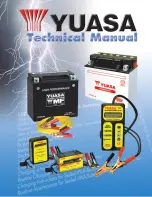
DRIVER SUPPORT
* Option/accessory, for more information, see Introduction.
271
WARNING
•
Pilot Assist is not a collision avoidance
system. The driver is always responsible
for applying the brakes if the system does
not detect another vehicle.
•
Do not use Pilot Assist in demanding
driving conditions such as city driving or
other heavy traffic situations, in slippery
conditions, when there is a great deal of
water or slush on the road, during heavy
rain or snow, in poor visibility, on winding
roads or on highway on- or off-ramps.
•
Pilot Assist uses the vehicle's camera
and radar sensor, which have limitations.
Pilot Assist may deactivate or not function
optimally if:
•
the lane's side market lines are missing,
badly faded or cross each other.
•
the division of lanes is not clear, e.g.,
when a line divides or merges with
another, at exits or if there are many road
signs/markers.
•
if there are edges or other lines on or
near the lane, e.g., curbs, cracks, repaired
areas, sharp shadows, etc.
•
the lane is narrow or winding.
•
the weather conditions (rain, snow, fog,
slush, poor visibility, backlighting, etc).
The driver should also be aware that Pilot
Assist has the following limitations:
•
High curbs, barriers and temporary obsta-
cles (cones, barriers etc) may not be
detected or could be detected incorrectly
as side marker lines, which may create a
risk of collision. The driver must ensure a
safe distance to these obstacles.
•
The camera or radar sensor may not be
able to detect objects if there are pot-
holes or if there are stationary objects
partially or completely blocking the road.
•
Pilot Assist does not "see" pedestrians,
animals, etc.
•
Pilot Assist's steering capacity is limited
and may not always be able to help the
driver keep the vehicle in the lane.
The driver can always take action to override Pilot
Assist.
Steep roads and/or heavy loads
Pilot Assist is primarily intended for use on rela-
tively level roads. The function may not be able to
maintain the correct time interval to the vehicle
ahead on when driving down steep hills, when the
vehicle is transporting a heavy load or if it is tow-
ing a trailer. The driver should be attentive and
prepared to apply the brakes in these situations.
Related information
•
Radar sensor limitations (p. 248)
•
•
Starting and activating Pilot Assist (p. 266)
•
Setting a Pilot Assist time interval (p. 268)
•
Deactivating/resuming Pilot Assist (p. 267)
•
Pilot Assist auto-hold brake function (p. 269)
•
Summary of Contents for 2016 XC 90 Twin Engine
Page 1: ...WEB EDITION OWNER S MANUAL ...
Page 2: ......
Page 15: ...INTRODUCTION ...
Page 56: ......
Page 57: ...SAFETY ...
Page 92: ......
Page 93: ...INSTRUMENTS AND CONTROLS ...
Page 174: ......
Page 175: ...CLIMATE ...
Page 199: ...LOADING AND STORAGE ...
Page 216: ......
Page 217: ...LOCKS AND ALARM ...
Page 242: ......
Page 243: ...DRIVER SUPPORT ...
Page 336: ......
Page 337: ...STARTING AND DRIVING ...
Page 382: ......
Page 383: ...INFOTAINMENT ...
Page 423: ...VOLVO ON CALL WITH SENSUS CONNECT ...
Page 437: ...NAVIGATION ...
Page 475: ...WHEELS AND TIRES ...
Page 497: ...MAINTENANCE AND SERVICING ...
Page 516: ... MAINTENANCE AND SERVICING 514 ...
Page 545: ...SPECIFICATIONS ...
Page 547: ...SPECIFICATIONS 545 Location of labels ...
Page 561: ...HOTSPOTS ...
Page 563: ...HOTSPOTS 561 Driver s door panel Engine compartment Exterior ...
Page 564: ... HOTSPOTS 562 ...
Page 565: ...HOTSPOTS 563 Center display and tunnel consol ...
Page 566: ...HOTSPOTS 564 Interior rearview mirror Interior ...
Page 567: ...HOTSPOTS 565 ...
Page 568: ...HOTSPOTS 566 Remote key Trunk ...
Page 580: ...INDEX 578 ...
Page 581: ......
















































